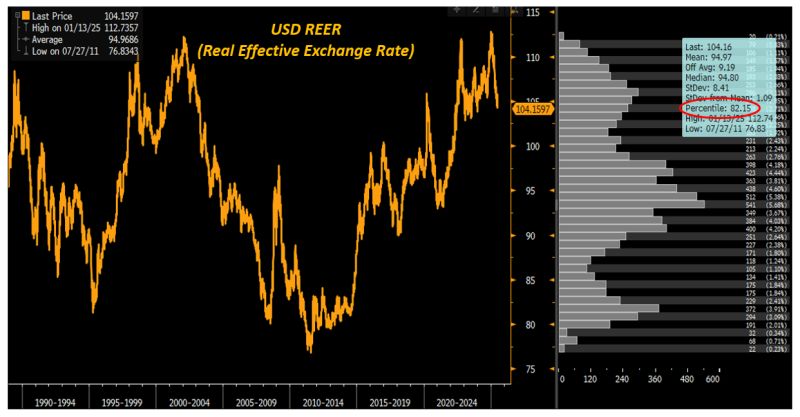Gold prices hit record high above $3,650/oz on rate cut bets, haven appeal
The US Dollar just had its worst start of the year in many decades.
And it could get worse going forward.
In the first 6 months of the year, the Trump administration has clearly shown its true colors.
The overall economic agenda is based on the idea that the US Dollar is way too strong because foreign countries have ‘’ripped off America’’ for decades, and there are only 3 ways to fix this:
1) The US should consume less hence not offering the demand necessary for countries to export a lot
2) Roles should reverse, and foreign countries should engage in big fiscal and boost domestic demand
3) The US unilaterally weakens the USD so much that it acts as the rebalancing mechanism itself
Option 1 and 2 are very hard to achieve, and hence the Trump administration has resorted to option 3: a unilateral weakening of the US Dollar via tariffs, attacks on the Fed independence, and major uncertainty injections for foreign investors.
How weak should the US Dollar be to mechanically ’’rebalance’’ this system?
The chart below shows the REER (real effective exchange rate) valuation for the US Dollar going back 40 years.

The REER is a simple FX valuation metric that looks at the currency against a basket of peers, and it also takes into account inflation. The idea is very simple: the fair level of a currency pair is the one that doesn’t allow for any difference in the true underlying price of a good sold in either of the two countries (as postulated by the Purchasing Power Parity and the Law of One Price).
According to this model, the USD is still 10%+ overvalued.
Where do you think the US Dollar could go?
And have you prepared your portfolios for potential currency impacts?
***
This article was originally published on The Macro (BCBA:BMAm) Compass. Come join this vibrant community of macro investors, asset allocators and hedge funds - check out which subscription tier suits you the most using this link.
